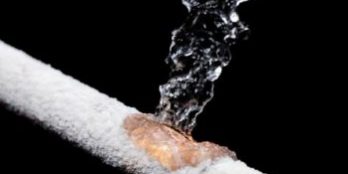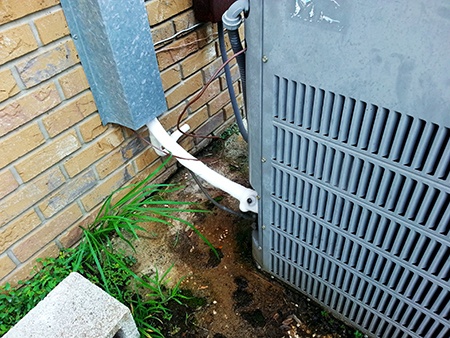What to Handle a Frozen AC Pipe - Critical Measures for Restoration
What to Handle a Frozen AC Pipe - Critical Measures for Restoration
Blog Article
Everyone has got their personal opinions about What Causes AC Pipes To Freeze?.

Intro
Finding that your AC pipeline is iced up can be concerning, specifically during warm summer months when you rely upon your ac system the most. Recognizing what to do in such a circumstance is critical to prevent further damages to your air conditioning system and guarantee your comfort indoors.
Understanding the Causes
A number of elements can add to the cold of an air conditioning pipe. Understanding these reasons can help you deal with the issue successfully.
Lack of Airflow
One common cause of a frozen air conditioning pipeline is inadequate air flow. When the airflow over the evaporator coil is restricted, it can cause the coil to go down below freezing temperature, bring about ice formation on the pipe.
Reduced Refrigerant Levels
Insufficient refrigerant degrees in your air conditioning system can likewise lead to an icy pipeline. Low refrigerant degrees can trigger the pressure in the system to go down, leading to the cold of moisture on the evaporator coil.
Cold Weather Conditions
In cooler climates, freezing temperature levels outside can contribute to the cold of a/c pipes. If your air conditioning unit is not appropriately shielded or if there are leakages in the ductwork, cool air can penetrate the system, triggering the pipeline to ice up.
Dirty Air Filters
Unclean or clogged air filters can limit airflow in your a/c system, resulting in numerous issues, including a frozen pipe. It's vital to replace or clean your air filters on a regular basis to ensure correct air flow and prevent ice build-up.
Indications of a Frozen AC Pipe
Recognizing the indications of an icy air conditioning pipe is important for timely activity.
Lowered Airflow
If you observe a substantial decrease in air flow from your vents, it can show a frozen pipeline.
Ice Buildup on the Pipe
Noticeable ice buildup on the refrigerant line or the evaporator coil is a clear indication of an icy air conditioning pipe.
Unusual Sounds from the Unit
Uncommon sounds, such as hissing or bubbling, originating from your air conditioning unit can indicate that there's ice existing on the pipeline.
Immediate Actions to Take
When faced with an icy a/c pipeline, it's important to act rapidly to avoid further damage to your cooling system.
Turning off the air conditioning
The first step is to turn off your air conditioning system to avoid the system from running and aggravating the concern.
Checking for Blockages
Inspect the location around the indoor system for any type of obstructions that may be blocking airflow, such as furniture or curtains.
Thawing the Pipe
You can utilize mild techniques like putting towels soaked in warm water around the icy pipe to assist thaw it slowly.
Safety nets
Taking safety nets can assist avoid future occurrences of a frozen AC pipe.
Regular Maintenance Checks
Arrange regular maintenance talk to a specialist HVAC service technician to ensure that your air conditioning system is running efficiently.
Changing Air Filters
Regularly change or cleanse your air filters to stop airflow constraints and keep optimum performance.
Shielding Exposed Pipes
If your air conditioner pipes are subjected to cold temperatures, take into consideration protecting them to stop freezing throughout winter months.
Looking For Professional Help
If DIY methods stop working to settle the issue or if you're unclear concerning how to proceed, it's finest to seek aid from a certified HVAC service technician.
When DIY Methods Fail
If your attempts to thaw the pipeline or address other concerns are unsuccessful, it's time to call in a specialist.
Relevance of Hiring a Professional HVAC Technician
A qualified HVAC specialist has the competence and tools needed to diagnose and repair problems with your air conditioning system safely and efficiently.
Final thought
Managing a frozen AC pipeline can be an aggravating experience, yet understanding how to respond can help decrease damage and restore convenience to your home. By recognizing the causes, recognizing the indications, and taking prompt activity, you can successfully resolve the concern and protect against future incidents.
G UP? HOW TO FIX IT?
It happens all over America. And the rest of the world probably. It’s the hottest day ever and for some darn reason your AC isn’t cooling the house. You fiddle with the thermostat to try and fix the problem. Nada. All you can do now is go outside and check the AC unit. You make your way there and find your air conditioner unit is frozen! But how?
In this post we’ll cover how you can tell that your air conditioner has frozen (other than the obvious reasons), what could have caused the freeze, and some of the things you can do about your AC freezing up. And if you have a frozen heat pump condenser, read our blog about it to learn what to do! But remember, it is always best to avoid your AC freezing up with an AC tune up. And if you are moving into a home, it's critical to get HVAC inspection so that you are aware of an AC problems before you move in.
Keep reading and you may be able to fix the frozen AC yourself. If you can’t, call an HVAC specialist. If you live in Maryland, call SuperTech HVAC for AC repair. We’ll take care of it.
How Does An Air Conditioning Unit Work?
How you probably imagine an AC works is wrong. Contrary to popular belief, an AC system does not inject cool air into a building. Instead, it removes the heat from inside and transfers it outside. Cool huh? (Pun intended).There are 4 major components among the 3 stations of an air conditioning system: the evaporator coil, the compressor, the condenser, and the refrigerant – a special chemical that links everything together through a closed loop system.
Station 1:
Warm indoor air is sucked into the return vent, through a filter, and blows over the evaporator coil. The heat is absorbed into the cold refrigerant, turning it from liquid to gas. The air, which is now cool, is blown back into the home to areas that your thermostat, i.e. you, has decided.
Station 2:
The refrigerant makes its way outside the house to the compressor, which squeezes the warm refrigerant, raising its gaseous temperature even more.
Station 3:
When the super hot vapor refrigerant reaches the condenser, the last step, the heat is expelled and absorbed into the outdoor air. The refrigerant instantly cools, which changes it from gas back to liquid form. The cold liquid refrigerant is now ready to return to station 1 and repeat the process.
Is Your AC Freezing Up? Here Are The Signs:
As you may have guessed, your air conditioner unit freezing up on a hot day is not normal.
If this happens, there's no need to panic. Often the issue can be solved with a little troubleshooting. If the AC unit is left frozen for too long however, you may find yourself with a bigger problem.
First things first, how do you know your AC is frozen?
Well, the obvious sign is the ice on your refrigerant line-set pipe. Simply check between your outdoor AC unit and your home's exterior wall to see whether your AC line frozen.
You might also have a frozen evaporator coil. This one's not as easy to check. You'll need to open a panel on the indoor unit to inspect. Don't do this unless you're handy. If you aren't, call an HVAC pro like SuperTech HVAC or you may damage something in the process.

Hopefully you enjoyed reading our section on Have a Frozen AC Line? Here’s How to Fix It. Thanks so much for taking a few minutes to read through our piece of content. For those who enjoyed reading our blog entry if you please don't forget to pass it around. Thanks a lot for your time. Visit us again soon.
Source This Article Report this page